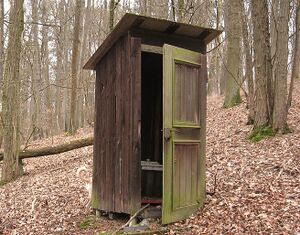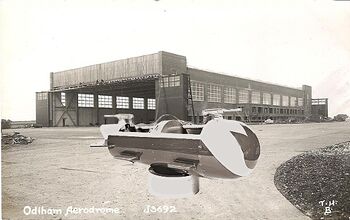Odiham
| One Day I Had A Mullet | |
 The George, in Odiham’s High Street | |
Former name |
Odouriferous Ham-and-Cheese |
|---|---|
| Nicknames(s) | none printable |
| Administrative status | |
| Nation | Engaland |
| Region | Hampshire |
| Subregion | Michel Delving |
| Statistics & fast facts | |
| Population | 4,237 hobbits |
| World rank | 84,113 (18th in obscurity) |
| Founded | 1513 by geese and ducks |
| Features | Only pest house still in operation, Spoon Henge, green stoats |
Odiham is a historic village and large civil parish in the Hart district of Hampshire, England, made famous by its Spoon Henge monument, originally constructed in 1324. With a plethora of strange and mutated inhabitants, this village is quite the wonder to behold. Many believe the name 'Odiham' originates from the pork aromas which were rife in this area during the late 18th Century (Odour-ham), but critics have have ridiculed this idea, reminding historians of the abbreviation 'One Day I Had A Mallett', often used by locals to express their annoyance when faced with visitors expecting Spoon Henge to still be intact.
Spoon Henge[edit]
Located next to Robert Mays School, Spoon Henge is fast becoming a popular tourist attraction in the area. It is rumoured that the wonderous sight was originally crafted in 1324 by 57 local fishmongers, each one eager to make their mark on spoon history. Crafted out of the bones of several hundred mackerel, the monument stands at four foot six inches tall, and is seventeen inches in diameter. Many of the spoon shapes are engraved with messages, thought to be from the fishmongers themselves. The most famous of these messages being 'Teaspoons and Trouts' - thought to be from Robert May himself, this message has been analysed by numerous historians over the last two centuries.
Robert May[edit]
Originally an unknown button and toenail enthusiast, Robert May certainly made his mark on the small village of Odiham. He often gathered children in the High Street, and would enthrall them for hours with his vast and colourful collection of toenail clippings, taken from people during his travels to a variety of strange lands (see Basingrad and Ventongimps). May soon realised his love of teaching, and opened a school where he could not only display and teach about toenail clippings, but also share his passion for buttons.
The George[edit]
Built by goatherders in the late 12th century, the George Inn has been a popular public house for centuries in Odiham. Originally, goats were permitted to enter the inn and were given their own seating area, but in the 1990s this was stopped by the landlord, as it was becoming too difficult to control their behaviour after a few drinks had been consumed. Understandably, this led to uproar from the goat farming community (and many sheep and weasel farmers were unhappy with this decision too). On January 25th 1993 a protest was staged on the High Street, and after talks an agreement was reached that the goats would be allowed to remain if they were suitably clothed, and had been given firm instructions beforehand. The landlord of the George even opened a weasel pen outside in the beer garden, so that the numerous weasels and ferrets could also enjoy the atmosphere of this friendly and jolly public house.
RAF Odiham[edit]
Offically the home of the RAF's Chinhook fleet but that's only because no one knew what else to do with them. In reality the base is the amongst the most interesting thing in the local area, simply because not everyone is a posh twat. Recently there hve been plans to extend the base, however these have been rejected by locals (well one local in particular) who have argued that they would rather use the land for someting more important like building a toenail and button museum in homage to Robert May.

